5 Questions Every Disheartened Leader Should Ask Themselves Before Giving Up Or Giving In
Dear Disheartened Leader,
Being THE leader isn’t the easiest thing in the world. But it's not the hardest thing either.
You’re not alone. The “ER” in the middle of the word lead•ER•ship is there on purpose. It is not supposed to be easy.
If you’re really leading, there’s rarely a season that isn’t filled with “ER.”
You solve a problem, two more pop up. You resolve them, and out of the corner of your eye, spot the next one.
As a campus leader for over 30 years, I get it.
After seeing leader after leader struggle with discouragement and wanting to throw in the towel long before their calling ran out, I wanted to write this note.
None of us really feel like the most successful person on earth. I surely don’t and you don’t need to fake it either.
And even though things are going well for HPG, and we have so much to be thankful for, I spend too many days wondering whether I’m missing something or feeling like we should be making more progress than we should.
You know what it’s like… The weight of:
- Budget and expenses.
- People who promise the moon but can’t even deliver the earth.
- New people who say they’re in and then walk away.
- Feeling like you are always under a microscope.
- Not being where you thought you would be at this point in your life.
- Uncertainty. Constant uncertainty.
- Chronic struggles with talented team members who just don’t want to wear the team jersey.
- Knowing your system isn’t perfect and wishing it would be but knowing it won’t ever be.
- Lack of gratitude from those whom you are bending over backward to serve.
- Feeling let down by others.
- Feeling like you are letting yourself down.
- Seeing other people’s practice and believing they have it easier than you do.
And on and on and on it goes…
This is the stuff of leadership they never teach you in graduate school.
I want you to know something. The discouragement you feel inside is real and coming from somewhere. Think about this and let this sink in for a minute today: The happiest and healthiest people are those whose expectations meet reality.
What do you do with that?
Here are five questions every disheartened leader should ask themselves before giving up or giving in.
1. What do I expect my system to give me?
No team or system will ever give you ultimate peace, fulfillment, joy, purpose, or anything like that. If you are expecting that from being a leader, you won’t find it.
If you are constantly discouraged or frustrated about your system, it might be because you are hoping it will give you something only your conscience can give you. That is called PEACE.
When you look to people or things to give you what only your faith can give you, you’re signed up for a dash of misery.
2. Who do I hope will affirm me?
This is a big one.
We all look for affirmation from people.
Here’s something someone told me a long time ago that I really don’t like because it’s so true: Never expect the people you lead to affirm you.
It’s not fair to them. And ultimately, it’s not fair to you.
Your job is to lead them, not to get them to applaud you.
Hey, if it happens…awesome. Consider that a bonus. But if you keep looking to others for praise, you’ll end up sliding down the slippery slope under question 3…
3. Who am I trying to please?
You will never fully please the people you serve. It’s impossible because we are imperfect people (and so are they).
If you are trying to please other leaders or get recognized, you will be miserable. You can never keep up with anyone else’s expectations. And you’ll let yourself, your family, and ultimately your team down.
If you focused on being liked, you won’t lead. Your insistence on pleasing everyone will mean you ultimately please no one.
Not to mention yourself.
4. How honest am I being with myself and others?
If you stuff your leadership failures and missed expectations instead of dealing with them, you will implode or explode one day. Your discouragement and mine often come from stuffing things we should just admit and deal with.
If you have a problem with another person, be completely honest with them. If you are mad at somebody, tell them.
If somebody let you down, let them now. If you have let yourself down, tell a friend.
Lying and pretending lead to misery. Just say it. I have done this numerous times and it’s terrible up front but so freeing in the end.
And you know what? Much of the time you end up redeeming the relationship.
If you won’t be honest with others, you also won’t be able to truly lead them.
5. What lie am I believing?
Gurus make it seem so easy, don’t they? Go to their conference or buy their product and all your problems disappear. Did you ever buy into that lie at some point?
Chances are you thought leadership would be easier. Well, that’s just silly.
Identify the lie you are believing, and you will crush some of the discouragement. The lie that storytellers sell you is really killing your spirit. We only need to look at history to discover that leadership was rarely ever easy.
Your discouragement isn’t just discouragement. It’s a symptom of something deeper going on. If you want to create a healthy culture across your system, you can’t be angry all the time. You can’t be frustrated 24/7. Take a step today & answer these questions honestly.
I believe it will help you beat your discouragement and get back on the growth track.
It’s propaganda to say leadership is easy. What’s true is that humble, determined, committed leadership is worth it.
Everyone deserves to live in a community served by healthy teams and highly reliable systems.
P.S. Whenever you are ready here are the 2 best ways I can help you:
1) Get your FREE guide: 5 Evidence-Based Practices to Reclaim More Team Engagement with Less Effort: www.higherperformancegroup.com/reclaim
2) Schedule a Call. Let’s talk about the obstacles (and opportunities) that you & your team are currently facing. www.higherperformancegroup.com/schedule
More Blog Articles



